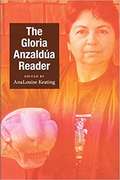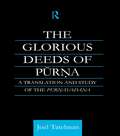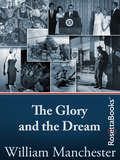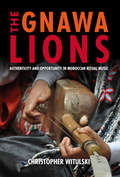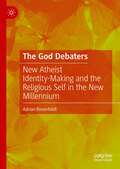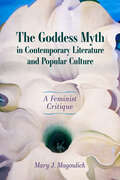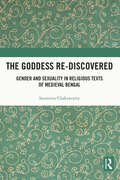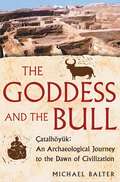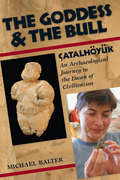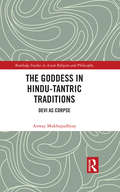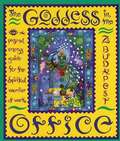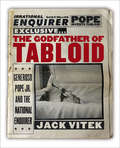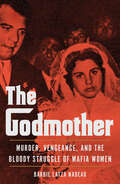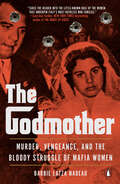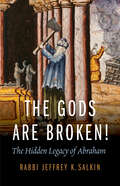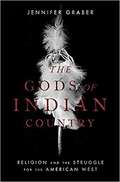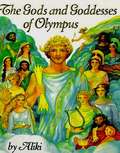- Table View
- List View
The Globally Familiar: Digital Hip Hop, Masculinity, and Urban Space in Delhi
by Ethiraj Gabriel DattatreyanIn The Globally Familiar Ethiraj Gabriel Dattatreyan traces how the rapid development of information and communication technologies in India has created opportunities for young people to creatively explore their gendered, classed, and racialized subjectivities in and through transnational media worlds. His ethnography focuses on a group of diverse young, working-class men in Delhi as they take up the African diasporic aesthetics and creative practices of hip hop. Dattatreyan shows how these aspiring b-boys, MCs, and graffiti writers fashion themselves and their city through their online and offline experimentations with hip hop, thereby accessing new social, economic, and political opportunities while acting as consumers, producers, and influencers in global circuits of capitalism. In so doing, Dattatreyan outlines how the hopeful, creative, and vitally embodied practices of hip hop offer an alternative narrative of urban place-making in "digital" India.
The Glocalization of Shanghai Disneyland (Routledge Focus on Asia)
by Ni-Chen SungFocusing on Disney’s production of Shanghai Disneyland, this book examines how the Chinese state and the local market influence Disney’s ownership and production of the identities and the representations of Shanghai Disneyland. Qualitative methods are here applied to combine both primary and secondary data, including document analysis, participant observation, and in-depth interviews. Shanghai Disneyland is purposely created to be different from the other Disneylands, under the “authentically Disney and distinctly Chinese” mandate. In order to survive and thrive in China, Disney carefully constructs Shanghai Disneyland as Disneyland with Chinese characteristics. Previous studies tend to link Disney with cultural imperialism; however, this book argues that it is not imperialism but glocalization that promotes a global company’s interests in China. In particular, the findings suggest state-capital-led glocalization: glocalization led by economic capital of the state (direct investment) and economic capital with the state (market potential). Furthermore, the four categories of glocalization with different conditions, considerations, and consequences illustrate various global–local dynamics in the process of a global formation of locality. The Glocalization of Shanghai Disneyland will appeal to students and scholars of sociology, communication studies, business studies, and Asian studies more broadly.
The Gloria Anzaldúa Reader (Latin America Otherwise)
by Gloria Anzaldúa AnaLouise KeatingBorn in the Río Grande Valley of south Texas, independent scholar and creative writer Gloria Anzaldúa was an internationally acclaimed cultural theorist. As the author of Borderlands / La Frontera: The New Mestiza, Anzaldúa played a major role in shaping contemporary Chicano/a and lesbian/queer theories and identities. As an editor of three anthologies, including the groundbreaking This Bridge Called My Back: Writings by Radical Women of Color, she played an equally vital role in developing an inclusionary, multicultural feminist movement. A versatile author, Anzaldúa published poetry, theoretical essays, short stories, autobiographical narratives, interviews, and children’s books. Her work, which has been included in more than 100 anthologies to date, has helped to transform academic fields including American, Chicano/a, composition, ethnic, literary, and women’s studies. This reader—which provides a representative sample of the poetry, prose, fiction, and experimental autobiographical writing that Anzaldúa produced during her thirty-year career—demonstrates the breadth and philosophical depth of her work. While the reader contains much of Anzaldúa’s published writing (including several pieces now out of print), more than half the material has never before been published. This newly available work offers fresh insights into crucial aspects of Anzaldúa’s life and career, including her upbringing, education, teaching experiences, writing practice and aesthetics, lifelong health struggles, and interest in visual art, as well as her theories of disability, multiculturalism, pedagogy, and spiritual activism. The pieces are arranged chronologically; each one is preceded by a brief introduction. The collection includes a glossary of Anzaldúa’s key terms and concepts, a timeline of her life, primary and secondary bibliographies, and a detailed index.
The Glorious Deeds of Purna: A Translation and Study of the Purnavadana (Routledge Critical Studies in Buddhism)
by Joel TatelmanBy providing an annotated translation of, and applying the methods of literary criticism to, a first-century account of the life of the saint Purna, this study introduces the reader to the richness and complexity of an essential Buddhist genre.
The Glory and the Dream: A Narrative History Of America, 1932-1972
by William ManchesterA New York Times–bestselling historian&’s in-depth portrait of life in America, from the Depression era to the early 1970s: &“Magnificent&” (The New York Times). Award-winning historian and biographer William Manchester, author of The Last Lion, an epic three-volume biography of Winston Churchill, brings us an evocative exploration of the American way of life from 1932 to 1972. Covering almost every facet of American culture during a very diverse and tumultuous period in history, Manchester&’s account is both dramatic and surprisingly intimate—with compelling details that could only be known by a dedicated historian who lived through and documented this fascinating time. It&’s an enlightening, affecting, and highly entertaining journey through four extraordinary decades in the life of America. &“There is no fiction that can compete with good, gossipy, anecdotal history—the inside story of who said or did what in moments of great tensions or crisis . . . I think you ought to read this history and weep, read it and laugh, read it and don&’t repeat it.&” —Anatole Broyard
The Gluten-free Cookbook for Kids
by Adriana RabinovichHaving to follow a gluten-free diet can be a daunting prospect for children and young adults - they feel isolated at a time when their friends are enjoying everything from bread, pizza and pasta, to crisps, cakes and biscuits. Yet with supermarkets now stocking many gluten-free ingredients, you can make versatile, healthy and enticing gluten-free meals that will appeal to all the family. Based on recipes created for the author's own daughter, The Gluten-free Cookbook for Kids includes: Over 100 recipes from crispy chicken nuggets and quick pizza to birthday cupcakes and peanut butter cookies; Top Ten kids' favourite dishes; A list of store cupboard essentials; Creative ideas for special treats, healthy snacks and lunchboxes; Top tips for eating out, travelling and school trips. The Gluten-free Cookbook for Kids will solve many of your mealtime dilemmas and help your child to learn what they can and can't eat. An essential guide for any gluten-free family.
The Gnawa Lions: Authenticity and Opportunity in Moroccan Ritual Music (Public Cultures of the Middle East and North Africa)
by Christopher WitulskiTraditionally gnawa musicians in Morocco played for all-night ceremonies where communities gathered to invite spirits to heal mental, physical, and social ills untreatable by other means. Now gnawa music can be heard on the streets of Marrakech, at festivals in Essaouira, in Fez’s cafes, in Casablanca’s nightclubs, and in the bars of Rabat. As it moves further and further from its origins as ritual music and listeners seek new opportunities to hear performances, musicians are challenged to adapt to new tastes while competing for potential clients and performance engagements. Christopher Witulski explores how gnawa musicians straddle popular and ritual boundaries to assert, negotiate, and perform their authenticity in this rich ethnography of Moroccan music. Witulski introduces readers to gnawa performers, their friends, the places where they play, and the people they play for. He emphasizes the specific strategies performers use to define themselves and their multiple identities as Muslims, Moroccans, and traditional musicians. The Gnawa Lions reveals a shifting terrain of music, ritual, and belief that follows the negotiation of musical authenticity, popular demand, and economic opportunity.
The Goals of Social Policy (Routledge Revivals)
by Jane Lewis Martin Bulmer David PiachaudFirst published in 1989, The Goals of Social Policy is an invaluable text that will give students an admirable introduction to the central concerns of the study of social policy. It asks what have been the traditional concerns of social policy as a subject of academic study, and what its context should be in the changed political environment of twenty-first century. Three issues receive close attention for their future implications: social policy and the family (focusing on gender), social policy and community (including race and public order issues) and social policy and the economy. Retrospective chapters examine the relationship between social policy and social research, social theory and social work. The book will appeal particularly to students of social policy, social work, sociology and political science, as well as to those in applied fields such as criminology, health studies, education and women’s studies with interests in social policy. It will also appeal to the general reader interested in keeping abreast of the latest thinking about social policy.
The God Debaters: New Atheist Identity-Making and the Religious Self in the New Millennium
by Adrian RosenfeldtThis book examines the post-9/11 God debate in the West. Through a close study of prominent English God debaters Richard Dawkins, Karen Armstrong, Christopher Hitchens, and Terry Eagleton, Adrian Rosenfeldt demonstrates that New Atheist and religious apologist ideas and arguments about God, science, and identity are driven by mythic autobiographical narratives and Protestant or Catholic cultural heritage. This study is informed by criticism of the New Atheist polemic as being positivistic, and the religious apologists as propagating “sophisticated theology.” In both cases, the God debaters are perceived as disassociating themselves from human lived experience. It is through reconnecting the God debaters’ intellectual ideas to their cultural and social background that the God debate can be grounded in a recognisable human reality that eludes reductive distinctions and disembodied abstractions.
The God of Modernity: The Development of Nationalism in Western Europe (European Studies)
by Josep R. LloberaThis book provides an integrated framework for explaining how nationalism has become one of the most powerful ideologies of modern times. Starting with a consideration of the medieval roots of the nation, the author goes on to examine the various approaches and structural theories which have been used to explain the development of nationalism. In so doing, he highlights the key role of cultural and political influences, as well as the impact of the French Revolution and its aftermath. Clearly written with concise, self-contained chapters, this book will be of interest to undergraduates taking a range of social science and history courses as well as specialist readers.
The Goddess Myth in Contemporary Literature and Popular Culture: A Feminist Critique
by Mary J. MagoulickHonorable Mention for the 2022 Elli Köngäs-Maranda Prize awarded by the Women's Section of the American Folklore SocietyGoddess characters are revered as feminist heroes in the popular media of many cultures. However, these goddess characters often prove to be less promising and more regressive than most people initially perceive. Goddesses in film, television, and fiction project worldviews and messages that reflect mostly patriarchal culture (included essentialized gender assumptions), in contrast to the feminist, empowering levels many fans and critics observe. Building on critiques of other skeptical scholars, this feminist, folkloristic approach deepens how our remythologizing of the ancient past reflects a contemporary worldview and rhetoric. Structures of contemporary goddess myths often fit typical extremes as either vilified, destructive, dark, and chaotic (typical in film or television); or romanticized, positive, even utopian (typical in women’s speculative fiction). This goddess spectrum persistently essentializes gender, stereotyping women as emotional, intuitive, sexual, motherly beings (good or bad), precluded from complex potential and fuller natures. Within apparent good-over-evil, pop-culture narrative frames, these goddesses all suffer significantly. However, a few recent intersectional writers, like N. K. Jemisin, break through these dark reflections of contemporary power dynamics to offer complex characters who evince “hopepunk.” They resist typical simplified, reductionist absolutes to offer messages that resonate with potential for today’s world. Mythic narratives featuring goddesses often do, but need not, serve merely as ideological mirrors of our culture’s still problematically reductionist approach to women and all humanity.
The Goddess Path: Myths, Invocations & Rituals
by Patricia MonaghanCall the goddess into your life with beautiful and ancient invocations. Awaken to her myths and rediscover her symbols. Create your own rituals to honor the lessons she has to teach. This book will help you nurture your own connection to the goddess and share in her boundless wisdom through celebration, prayer, and ritual.
The Goddess Re-discovered: Gender and Sexuality in Religious Texts of Medieval Bengal
by Saumitra ChakravartyThe book critically analyses questions of gender and sexuality in the medieval religious texts of Bengal. It analyses the emergence of religious cults in patriarchal contexts, the humanisation of the goddess figure as a wife and mother who is subject to social and ethical codes, and demythologisation of folk epics. This volume discusses the folk genre of the Mangal Kavyas such as the Chandi Mangal and the Manasa Mangal, against the perspectives of Sanskrit texts like the Devi Mahatmya and the Devi Bhagavata Purana; compares and contrasts the Kalika Purana against the texts and practices of the Tantric cult, to shed light on the paradoxes and parallels in the images of Kali found in the texts and practices dominant in the eastern region of India. The author also highlights the centrality of Chaitanya in the Gaudiya Vaishnava movement, the social and religious revolution he brought with the philosophy of raganuga bhakti along with the androgynous aspects in his relationships; explores the concept of mystical eroticism in the love of Radha and Krishna as seen in the song sequences of the Gaudiya Vaishnavas; and discusses women’s Rama-kathas found in a variety of languages across India. Rich in archival material, this book will be an essential read for scholars and researchers of gender studies, women’s studies, literature, medieval history, social history, cultural anthropology, religious studies, cultural studies, South Asia studies, and those interested in the history of medieval Bengal.
The Goddess and the Bull: Catalhoyuk: An Archaeological Journey to the Dawn of Civilization
by Michael BalterThousands of years before the pyramids were built in Egypt and the Trojan War was fought, a great civilization arose on the Anatolian plains. The Goddess and the Bull details the dramatic quest by archaeologists to unearth the buried secrets of human cultural evolution at this huge, spectacularly well-preserved 9,500-year-old village in Turkey. Here lie the origins of modern society -- the dawn of art, architecture, religion, family -- even the first tangible evidence of human self-awareness, the world's oldest mirrors. Some archaeologists have claimed that the Mother Goddess was first worshipped at Çatalhöyük, which is now a site of pilgrimage for Goddess worshippers from all over the world. The excavations here have yielded the seeds of the Neolithic Revolution, when prehistoric humans first abandoned the hunter-gatherer life they had known for millions of years, invented farming, and began living in houses and communities. Michael Balter, the excavation's official biographer, brings readers behind the scenes, providing the first inside look at the remarkable site and its history of scandal and thrilling scientific discovery. He tells the very human story of two colorful men: British archaeologist James Mellaart, who discovered Çatalhöyük in 1958 only to be banned from working at the site forever after a fabulous ancient treasure disappeared without a trace; and Ian Hodder, a pathbreaking archaeological rebel who reinvented the way archaeology is practiced and reopened the excavation after it had lain dormant for three decades. Today Hodder leads an international team of more than one hundred archaeologists who continue to probe the site's secrets. Balter reveals the true story behind modern archaeology -- the thrill of history-making scientific discovery as well as the crushing disappointments, the community and friendship, the love affairs, and the often bitter rivalries between warring camps of archaeologists. Along the way, Balter describes the cutting-edge advances in archaeological science that have allowed the team at Çatalhöyük to illuminate the central questions of human existence.
The Goddess and the Bull: Çatalhöyük: An Archaeological Journey to the Dawn of Civilization
by Michael BalterVeteran science writer Michael Balter skillfully weaves together many threads in this fascinating book about one of archaeology’s most legendary sites— Çatalhöyük. First excavated forty years ago, the site is justly revered by prehistorians, art historians, and New Age goddess worshippers alike for its spectacular finds dating almost 10,000 years ago. Archaeological maverick Ian Hodder, leader of the recent re-excavation at this Turkish mound, designated Balter as the project’s biographer. The result is a skillful telling of many stories about both past and present: of the inhabitants of Neolithic Çatalhöyük and the development of human creativity and ingenuity, as revealed in the recent excavation; of James Mellaart, the original excavator, whose troubles off the mound eventually overshadowed his incisive work at the site; of Hodder and his intense, brilliant crew who marveled and squabbled over the meaning of finds in dusty trenches while attempting to reintepret Mellaart’s work; and of the recent history of the theory and methods of archaeology itself. Part story of the human past, part soap opera of modern scholarly life, part textbook on the practice of modern archaeology, this book should appeal to general readers and archaeological students alike.
The Goddess and the King in Indian Myth: Ring Composition, Royal Power and The Dharmic Double Helix (Routledge Hindu Studies Series)
by Raj BalkaranThe Sanskrit narrative text Devī Māhātmya, “The Greatness of The Goddess,” extols the triumphs of an all-powerful Goddess, Durgā, over universe-imperiling demons. These exploits are embedded in an intriguing frame narrative: a deposed king solicits the counsel of a forest-dwelling ascetic, who narrates the tripartite acts of Durgā which comprise the main body of the text. It is a centrally important early text about the Great Goddess, which has significance to the broader field of Purāṇic Studies. This book analyzes the Devī Māhātmya and argues that its frame narrative cleverly engages a dichotomy at the heart of Hinduism: the opposing ideals of asceticism and kingship. These ideals comprise two strands of what is referred to herein as the dharmic double helix. It decodes the symbolism of encounters between forest hermits and exiled kings through the lens of the dharmic double helix, demonstrating the extent to which this common narrative trope masterfully encodes the ambivalence of brāhmaṇic ideology. Engaging the tension between the moral necessity for nonviolence and the sociopolitical necessity for violence, the book deconstructs the ideological ambivalence throughout the Devī Māhātmya to demonstrate that its frame narrative invariably sheds light on its core content. Its very structure serves to emphasize a theme that prevails throughout the text, one inalienable to the rubric of the episodes themselves: sovereignty on both cosmic and mundane scales. The book sheds new light on the content of the Devī Māhātmya and contextualizes it within the framework of important debates within early Hinduism. It will be of interest to academics in the fields of Asian Religion, Hindu Studies, Goddess Studies, South Asian Studies, Narrative Studies and comparative literature.
The Goddess and the Sun in Indian Myth: Power, Preservation and Mirrored Māhātmyas in the Mārkaṇḍeya Purāṇa (Routledge Hindu Studies Series)
by Raj BalkaranIn analyzing the parallels between myths glorifying the Indian Great Goddess, Durgā, and those glorifying the Sun, Sūrya, found in the Mārkaṇḍeya Purāṇa, this book argues for an ideological ecosystem at work in the Mārkaṇḍeya Purāṇa privileging worldly values, of which Indian kings, the Goddess (Devī), the Sun (Sūrya), Manu and Mārkaṇḍeya himself are paragons. This book features a salient discovery in Sanskrit narrative text: just as the Mārkaṇḍeya Purāṇa houses the Devī Māhātmya glorifying the supremacy of the Indian Great Goddess, Durgā, it also houses a Sūrya Māhātmya, glorifying the supremacy of the Sun, Sūrya, in much the same manner. This book argues that these māhātmyas ere meaningfully and purposefully positioned in the Mārkaṇḍeya Purāṇa, while previous scholarship has considered this haphazard interpolation for sectarian aims. The book demonstrates that deliberate compositional strategies make up the Saura-Śākta symbiosis found in these mirrored māhātmyas. Moreover, the author explores what he calls the ‘dharmic double helix’ of Brahmanism, most explicitly articulated by the structural opposition between pravṛtti (worldly) and nivṛtti (other worldy) dharmas. As the first narrative study of the Sūrya Māhātmya, along with the first study of the Mārkaṇḍeya Purāṇa (or any Purāṇa), as a narrative whole, this book will be of interest to academics in the field of Religion, Hindu Studies, South Asian Studies, Goddess Studies, Narrative Theory and Comparative Mythology.
The Goddess in Hindu-Tantric Traditions: Devi as Corpse
by Anway MukhopadhyayThe Great Goddess, in her various puranic and tantric forms, is often figured as sitting on a corpse which is identified as Shiva-as-shava (God Shiva, the consort of the Devi and an iconic representation of the Absolute without attributes, the Nirguna Brahman). Hence, most of the existing critical works and ethnographic studies on Shaktism and the tantras have focused on the theological and symbolic paraphernalia of the corpses which operate as the asanas (seats) of the Devi in her various iconographies. This book explores the figurations of the Goddess as corpse in several Hindu puranic and Shakta-tantric texts, popular practices, folk belief systems, legends and various other cultural phenomena based on this motif. It deals with a more intricate and fundamental issue than existing works on the subject: how and why is the Devi – herself - figured as a corpse in the Shakta texts, belief systems and folk practices associated with the tantras? The issues which have been raised in this book include: how does death become a complement to life within this religious epistemology? How does one learn to live with death, thereby lending new definitions and new epistemic and existential dimensions to life and death? And what is the relation between death and gender within this kind of figuration of the Goddess as death and dead body? Analysing multiple mythic narratives, hymns and scriptural texts where the Devi herself is said to take the form of the Shava (the corpse) as well as the Shakti who animates dead matter, this book focuses not only on the concept of the theological equivalence of the Shava (Shiva as corpse) and the Shakti (Energy) in tantras but also on the status of the Divine Mother as the Great Bridge between the apparently irreconcilable opposites, the mediatrix between Spirit and Matter, death and life, existence-in-stasis and existence-in-kinesis. This book makes an important contribution to the fields of Hindu Studies, Goddess Spirituality, South Asian Religions, Women and Religion, India, Studies in Shaktism and Tantra, Cross-cultural Religious Studies, Gender Studies, Postcolonial Spirituality and Ecofeminism.
The Goddess in the Office: A Personal Energy Guide for the Spiritual Warrior at Work
by Zsuzsanna E. BudapestWise, whimsical, witty, and, when it's called for, deliciously wicked, America's favorite witch stirs up an empowering brew for working women everywhere. From receptionist to CEO and everyone in between, what woman wouldn't want to improve something (or many things) about her hectic seven-day work week? In this gift worthy guide, Z. Budapest combines down-to-earth tips and traditional magic to help women employ their powers to: * get a raise * increase productivity * repel sexual harassment * protect computer data * and much more!
The Godfather of Tabloid: Generoso Pope Jr. and the National Enquirer
by Jack Vitek“An original American story of a tough, embattled media player with uncanny gifts for giving the public what they want.” —Publishers WeeklyIn The Godfather of Tabloid, Jack Vitek explores the life and remarkable career of Generoso Pope Jr. and the founding of the most famous tabloid of all—the National Enquirer. Upon graduating from MIT, Pope worked briefly for the CIA until he purchased the New York Enquirer with dubious financial help from mob boss Frank Costello. Working tirelessly and cultivating a mix of American journalists (some of whom, surprisingly, were Pulitzer Prize winners) and buccaneering Brits from Fleet Street who would do anything to get a story, Pope changed the name, format, and content of the modest weekly newspaper until it resembled nothing America had ever seen before.Pope was a man of contradictions: he would fire someone for merely disagreeing with him in a meeting (once firing an editor in the middle of his birthday party), and yet he spent upwards of a million dollars a year to bring the world’s tallest Christmas tree to the Enquirer offices in Lantana, Florida, for the enjoyment of the local citizens. Driven, tyrannical, and ruthless in his pursuit of creating an empire, Pope changed the look and content of supermarket tabloid media, and the industry still bears his stamp. Grounded in interviews with many of Pope’s supporters, detractors, and associates, The Godfather of Tabloid is the first comprehensive biography of the man who created a genre and changed the world of publishing forever.“An engaging saga of one man’s obsessive devotion to creating an entertaining alternative universe.” —The Wall Street Journal
The Godmother: Murder, Vengeance and the Bloody Struggle of Mafia Women
by Barbie Latza NadeauThe untold stories of the women who have risen to prominence and notoriety in Italy's mafia—many more ruthless than the fathers and husbands they replaced—and the octogenarian murderer who decades ago blazed a bloody trail for them to follow.In 1955 in a public market outside Naples, Italy, a pregnant teenage widow named Assunta &“Pupetta&” Maresca encounters the man she believes to be her husband's killer. Minutes later, police find the man dead, riddled with an astonishing 29 bullets. Pupetta is arrested and convicted for his death. "I killed for love," she declares in court, "and I'd do it again!" It is the middle of the twentieth century. Italy is impoverished after the war. Criminal organization are springing up where governments fail their citizens. Women are considered adjunct to the growth of the criminal class; they are mothers who train sons in the primacy of blood feuds, or they are daughters and sisters who deliver messages for imprisoned male relatives. But Pupetta changes that. She is heralded "Lady Camorra," and in prison she takes on legendary stature, with films and TV shows produced to capitalize on her outlaw image. The crime and even the killing does not stop there for Pupetta, and though she is arguably the first mafia godmother, she is not the worst. Some of the women who follow in her footsteps will meet terrible fates; others will lead their clans. But if CNN correspondent and Daily Beast Rome bureau chief makes one thing clear in The Godmother, it's that as women seize ever more control of Italy's criminal underworld, they are proving themselves more vicious, cunning and cutthroat than the men they replace.
The Godmother: Murder, Vengeance, and the Bloody Struggle of Mafia Women
by Barbie Latza NadeauThe chilling story of one woman&’s rise to prominence in the Italian Mafia, and the as-yet untold stories of the women who followed in her footsteps.For as long as it has gripped our imaginations, the Mafia has been tied to an ingrained image of masculinity. We read about "made men," "wiseguys," and "goodfellas" leading criminal organizations whose culture prizes machismo, with women as ancillary and often-powerless characters: trivialized mistresses and long-suffering mob wives. The reality is far more complex. In The Godmother, investigative journalist Barbie Latza Nadeau tells the stories of the women who have risen to prominence, and fallen out of favor, in the Italian mob, beginning with the most infamous of these women: Pupetta Maresca. A Mafia woman born and raised, Pupetta avenged her husband&’s murder, firing 29 shots at the man who killed him. Woven throughout Pupetta's story is Nadeau's diligent research, and her personal interviews with the Mafia women themselves. Nadeau takes readers inside the Mafia families to paint a complete and complex portrait of the real culture that has shaped the Mafia, and the women who are part of it. Leaving behind the stereotypes we know from Mafia movies, The Godmother shows the Mafia in an entirely new light: full-fledged, ruthless, twenty-first-century criminal enterprises led by whoever is strong enough and smart enough to take control.
The Gods Are Broken!: The Hidden Legacy of Abraham
by Rabbi Jeffrey K. SalkinThe story of Abraham smashing his father&’s idols might be the most important Jewish story ever told and the key to how Jews define themselves. In a work at once deeply erudite and wonderfully accessible, Rabbi Jeffrey K. Salkin conducts readers through the life and legacy of this powerful story and explains how it has shaped Jewish consciousness.Offering a radical view of Jewish existence, The Gods Are Broken! views the story of the young Abraham as the &“primal trauma&” of Jewish history, one critical to the development of a certain Jewish comfort with rebelliousness and one that, happening in every generation, has helped Jews develop a unique identity. Salkin shows how the story continues to reverberate through the ages, even in its connection to the phenomenon of anti-Semitism.Salkin&’s work—combining biblical texts, archaeology, rabbinic insights, Hasidic texts (some never before translated), philosophy, history, poetry, contemporary Jewish thought, sociology, and popular culture—is nothing less than a journey through two thousand years of Jewish life and intellectual endeavor.
The Gods Of Indian Country: Religion And The Struggle For The American West
by Jennifer GraberDuring the nineteenth century, white Americans sought the cultural transformation and physical displacement of Native people. Though this process was certainly a clash of rival economic systems and racial ideologies, it was also a profound spiritual struggle. The fight over Indian Country sparked religious crises among both Natives and Americans. In The Gods of Indian Country, Jennifer Graber tells the story of the Kiowa Indians during Anglo-Americans' hundred-year effort to seize their homeland. Like Native people across the American West, Kiowas had known struggle and dislocation before. But the forces bearing down on them-soldiers, missionaries, and government officials-were unrelenting. With pressure mounting, Kiowas adapted their ritual practices in the hope that they could use sacred power to save their lands and community. Against the Kiowas stood Protestant and Catholic leaders, missionaries, and reformers who hoped to remake Indian Country. These activists saw themselves as the Indians' friends, teachers, and protectors. They also asserted the primacy of white Christian civilization and the need to transform the spiritual and material lives of Native people. When Kiowas and other Native people resisted their designs, these Christians supported policies that broke treaties and appropriated Indian lands. They argued that the gifts bestowed by Christianity and civilization outweighed the pains that accompanied the denial of freedoms, the destruction of communities, and the theft of resources. In order to secure Indian Country and control indigenous populations, Christian activists sanctified the economic and racial hierarchies of their day. The Gods of Indian Country tells a complex, fascinating-and ultimately heartbreaking-tale of the struggle for the American West.
The Gods and Goddesses of Olympus
by AlikiThis is the story of the mightiest of the gods and goddesses who lived in a golden palace on Olympus.


